How Long Does Fresh Pesto Last? [Plus Easy Recipe]
on May 18, 2022, Updated Apr 03, 2023
This post may contain affiliate links. Please read our disclosure policy.
There is nothing like fresh pesto in the summer. I’ll eat basil pesto from a jar too, but this is one of those times where fresh really is better. How long does fresh pesto last? In my house, not very long! Let’s talk about how to make it some ways to store it for best results.
If you want to make homemade pesto, I’m here to show you how and share some of my favorite ways to enjoy this delicious Italian sauce.
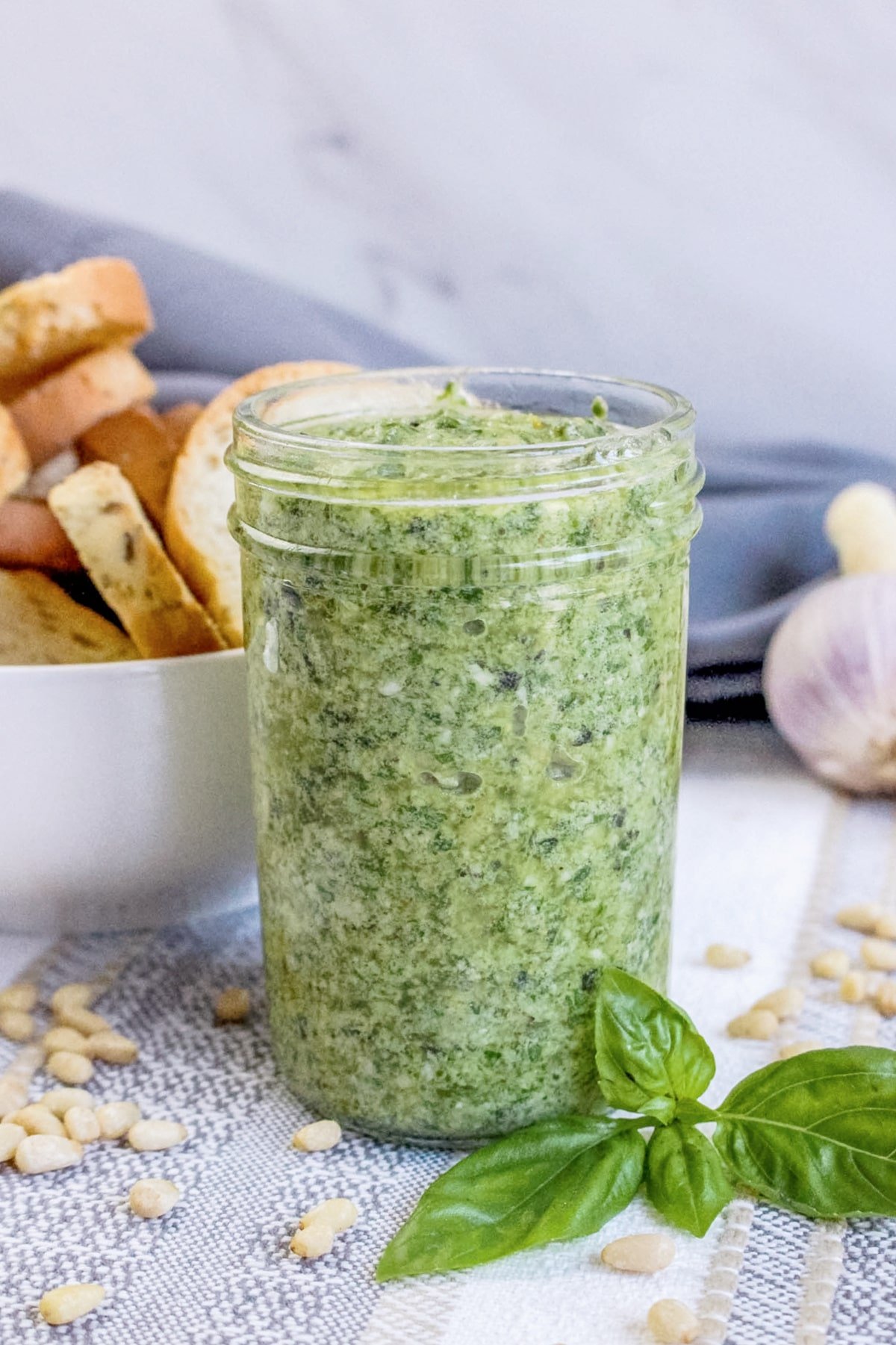
What is Pesto?
Classic pesto as we know it is typically made using freshly picked basil, olive oil, parmesan cheese, pine nuts and spices.
It’s blended together to make a delicious sauce or spread.
There are different ways to make it, of course. But this basic sauce is garlicky, creamy, and delicious on a variety of foods, which is why it is so popular.
It originated in, you guessed it, Italy sometime around the 16th century.
It wasn’t until the 1800s that basil was added however.

The term “pesto” actually comes not from the food but the method.
I’m guessing there were no blenders in 16th century Europe, so they made this sauce using a mortar and pestle to grind the ingredients together into a powder before adding the oil.
Ingredients to Make Homemade Pesto
To make an easy basil pesto sauce, all you need are a few fresh ingredients and a blender or food processor.
Or if you really want to tap into the past, try that mortar and pestle. Just don’t blame me if your arms are sore tomorrow!
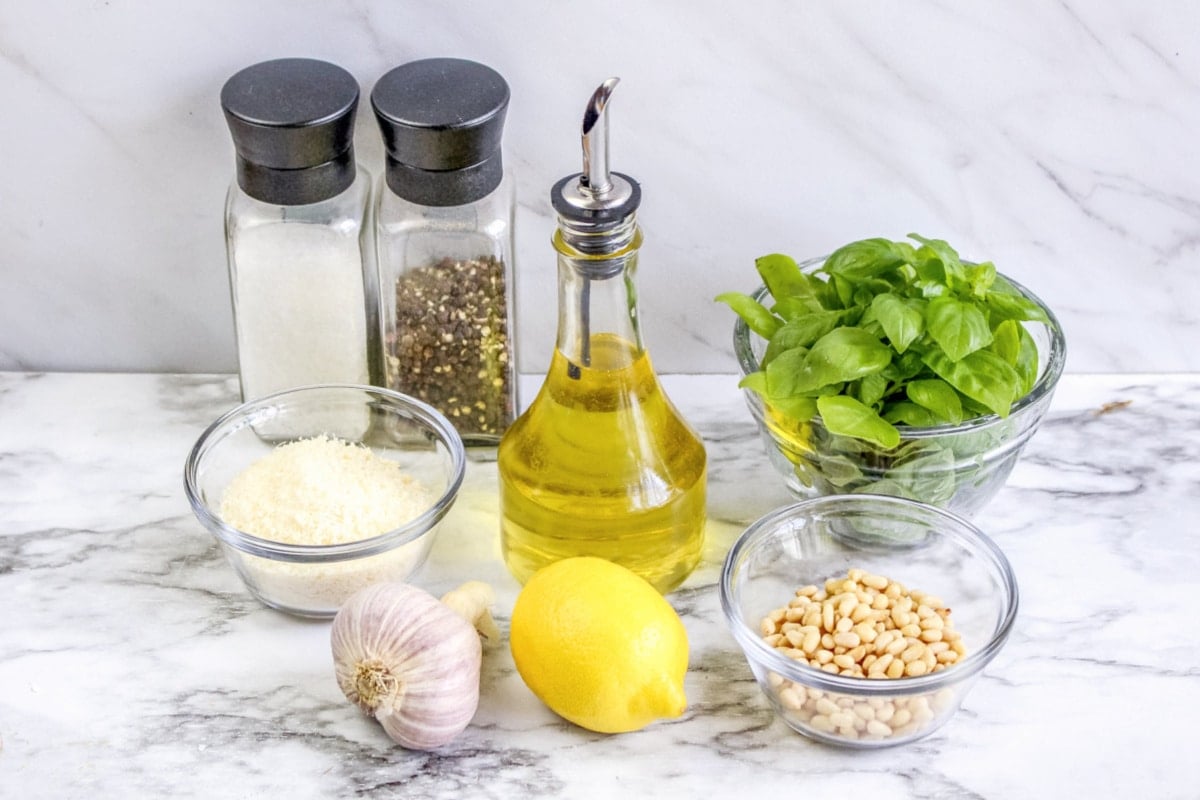
Here’s what you need to buy from the grocery store:
- 2 ½ to 3 cups fresh basil leaves, packed
- 2 cloves garlic, peeled
- 1 tablespoon lemon juice
- ¼ cup pine nuts
- ½ cup grated parmesan
- ¼ cup extra-virgin olive oil (this is where you want a good quality oil because it’s one of the main flavors)
- Salt and pepper, if desired
Pesto Variations
There are a variety of ways to make pesto. If you need to make a swap for dietary reasons or otherwise, below are a few ideas to help you out.
- Pine nuts can be pricey and hard to fine. Walnuts work just as well.
- If you want to make a nut-free pesto, consider using more cheese instead of nuts or even edamame.
- Asiago cheese can be used instead of parmesan
- Try adding sun-dried tomatoes or roasted red peppers to make a pesto rosso, which is totally different but still another type of pesto!
How to Make Fresh Pesto
This takes only 5-10 minutes and you can eat it right away!
If you are using nuts, the best way to really bring out the flavor is to toast them. Use a toaster oven or microwave for this.
Toast pine nuts by placing them on a microwave safe plate and heat for 30 seconds at a time. Stir and microwave again for another 30 seconds or until they smell fragrant.
Be sure you do not overcook. Allow pine nuts to cool slightly before adding to the basil mixture.
If using the toaster oven, add the nuts to a baking sheet and give them a shake every 30 seconds or so until fragrant.
Then, place basil in the food processor and give it a pulse.
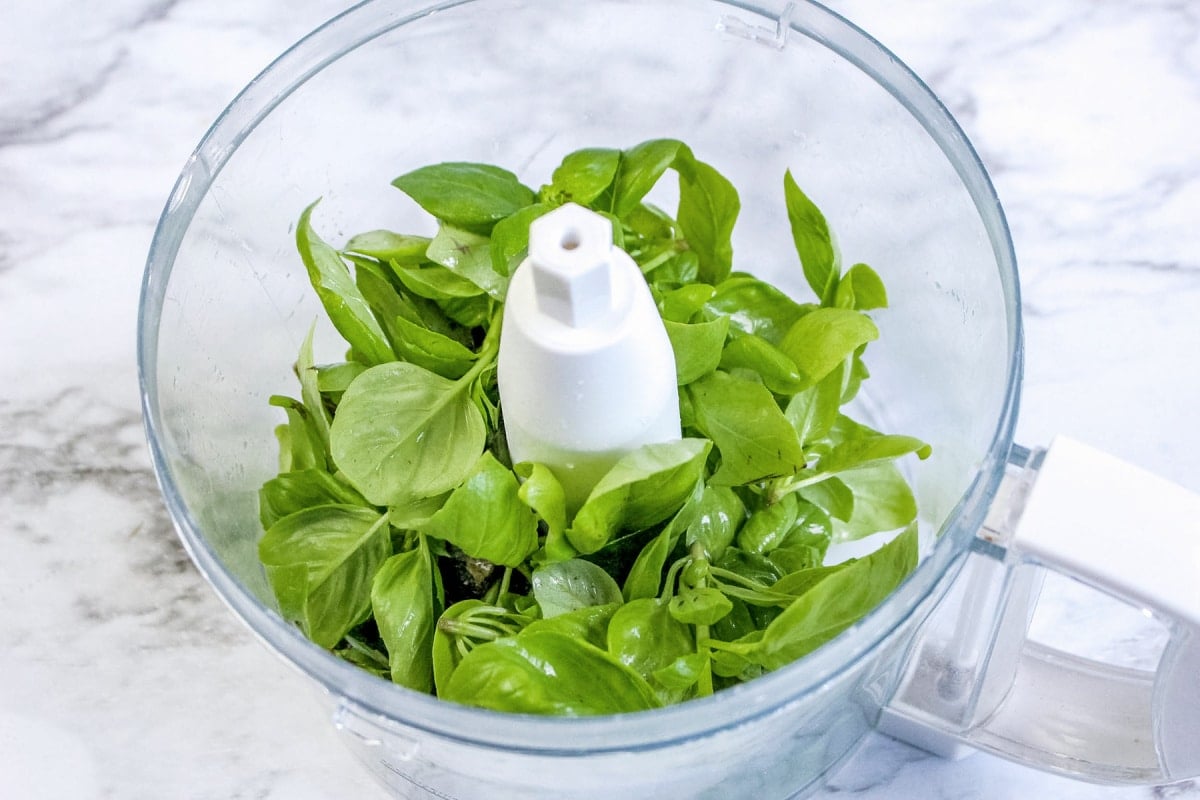
Add 1 tablespoon olive oil, pine nuts, and parmesan cheese in a food processor and blend.
Pour additional olive oil into the food processor as the mixture combines until the desired consistency is reached.
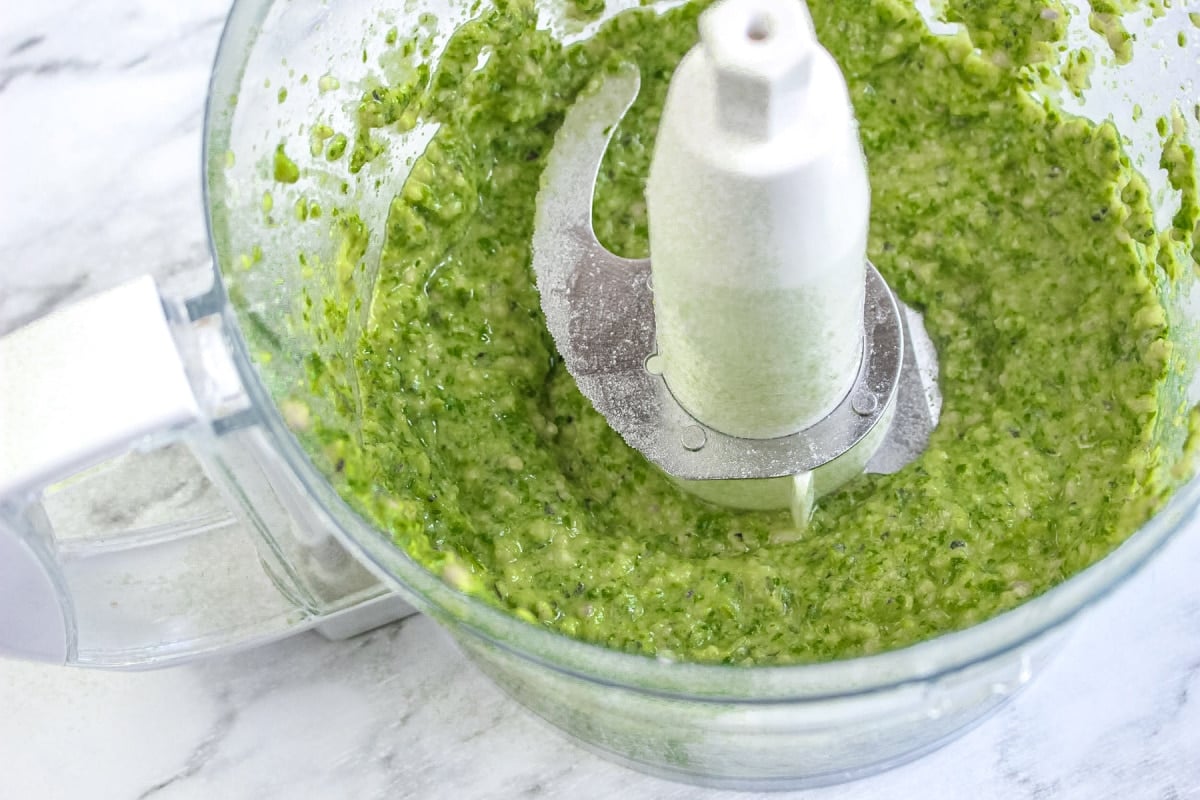
Serve immediately or read on for storage tips.
How Long Does Fresh Pesto Last?
If you decide to refrigerate your basil pesto recipe, you can expect it to last for up to 5 days.
Always store pesto in an airtight container with a lid and top off the jar with a small amount of olive oil to improve freshness.
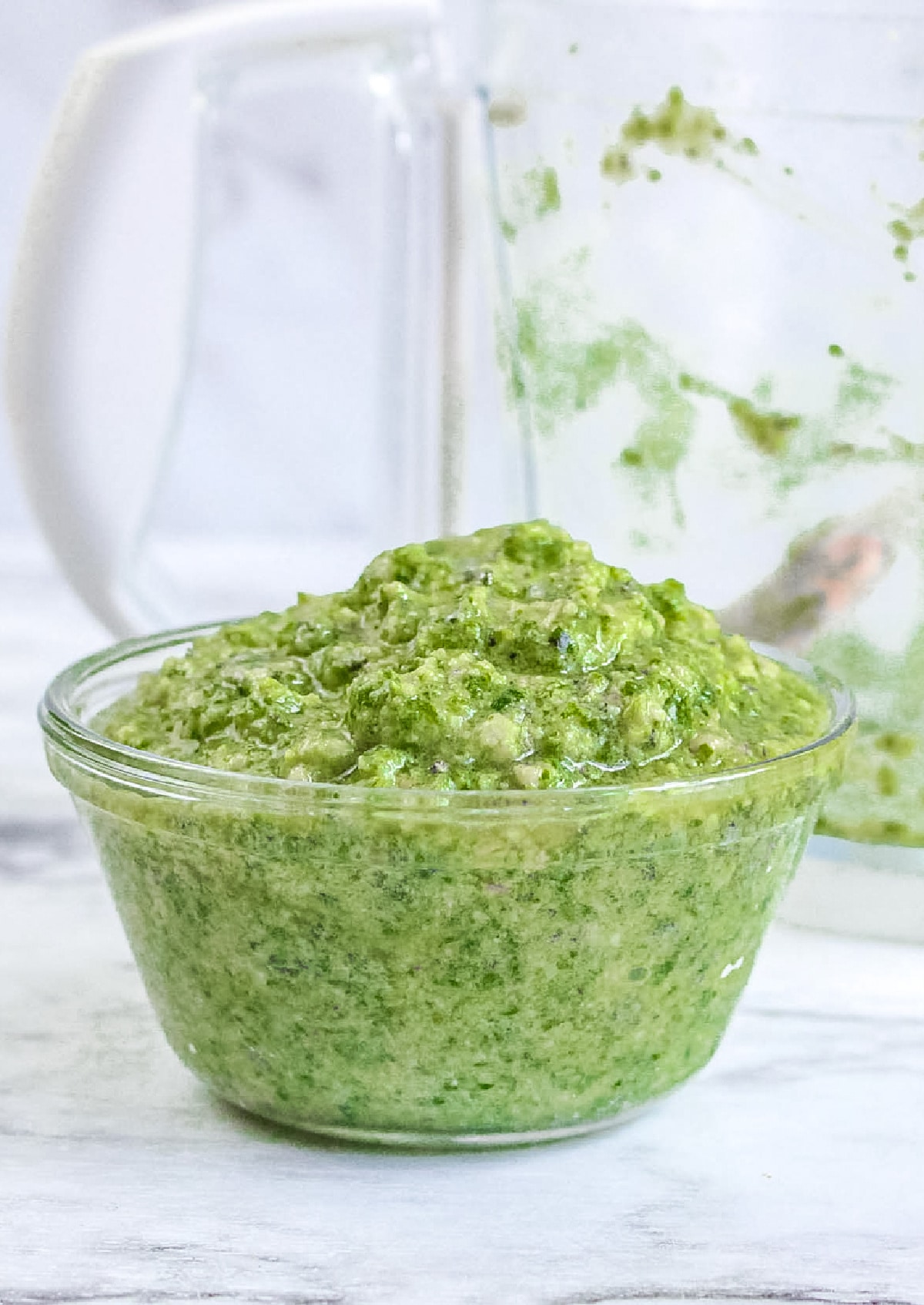
The shelf life of pesto purchased from a store will be longer because not only can you store it at room temperature before opening, it contains preservatives that will help the leftovers last a little longer in the fridge.
Where unopened sauce is concerned, you really can just follow the expiration date to determine pesto shelf life.
If you found it in the refrigerated area, it won’t last as long as unrefrigerated pesto.
How to Freeze Homemade Basil Pesto Sauce
The good news is, if you have a lot of fresh basil growing in the garden and you want to make a larger batch of pesto, freezing it is a great idea.
One of the best ways to freeze pesto is by pouring it into ice cube trays and placing in the freezer until frozen.
Then, transfer the pesto cubes to plastic freezer bags and seal until ready to use.
When frozen in this way, your fresh pesto sauce should last for about 2 months.
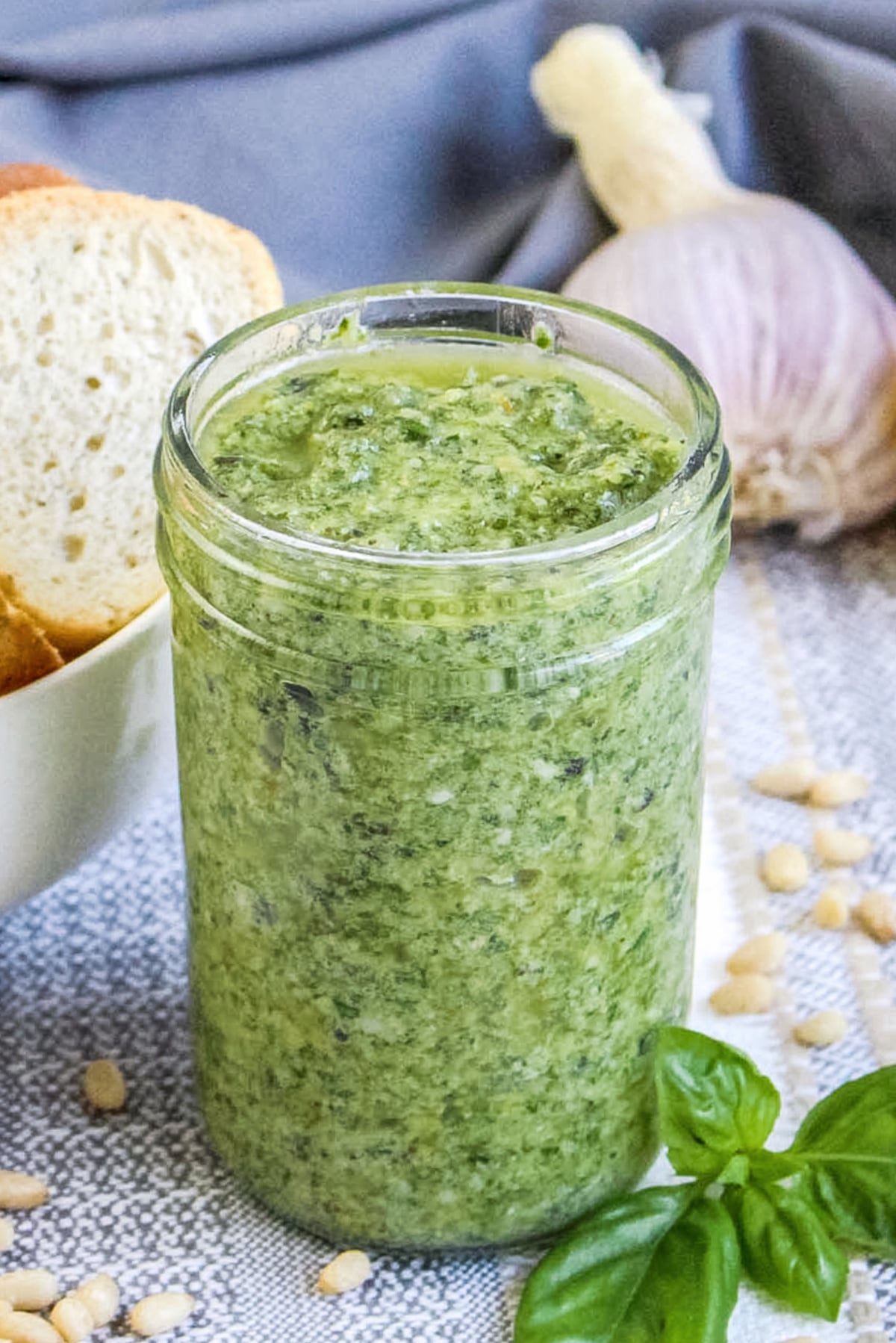
If you would rather freeze jars of pesto, you can do that too. Be sure to use freezer safe glass jars or plastic containers and leave a little space at the top when filling.
Then pour a little olive oil in the top of your pesto jars to keep the basil from turning brown and seal.
Uses for Pesto
I probably don’t have to tell you how to use pesto but if you are looking for ideas, I have a few! Below are some of my favorite ways to enjoy pesto.
- As a pasta sauce for pesto pasta with chicken bruschetta
- Added to a dipping bowl for bread
- As a spread for this delicious pesto grilled cheese
- Instead of oil when cooking eggs for breakfast
Print the Recipe Card
Now that you know all about pesto, it’s time to make some! Are you hungry yet?
Feel free to save or print this recipe. I hope you love it!
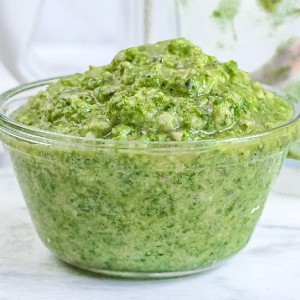
Fresh Basil Pesto
Equipment
- 1 Food Processor
- 1 Microwave or Toaster Oven
- 1 Airtight container
Ingredients
- 3 cups fresh sweet basil leaves, packed
- 2 cloves garlic, peeled
- 1 tablespoon lemon juice
- ¼ cup pine nuts
- ½ cup grated parmesan
- ¼ cup olive oil
- Salt and pepper, to taste
Instructions
- Toast pine nuts by placing them on a microwave safe plate and microwave for 30 seconds at a time. Stir and microwave again for another 30 seconds or until walnuts smell fragrant. Do not overcook. Allow pine nuts to cool slightly..
- Place basil, 1 tablespoon olive oil, pine nuts, and parmesan cheese in a food processor.
- Turn the food processor on and drizzle in additional olive oil as the mixture processes until the desired consistency is reached.
- Serve immediately or transfer to an airtight container for storage. See post for storage options and pesto shelf life.
Notes
Nutrition
Nutrition information is automatically calculated, so should only be used as an approximation.
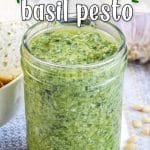
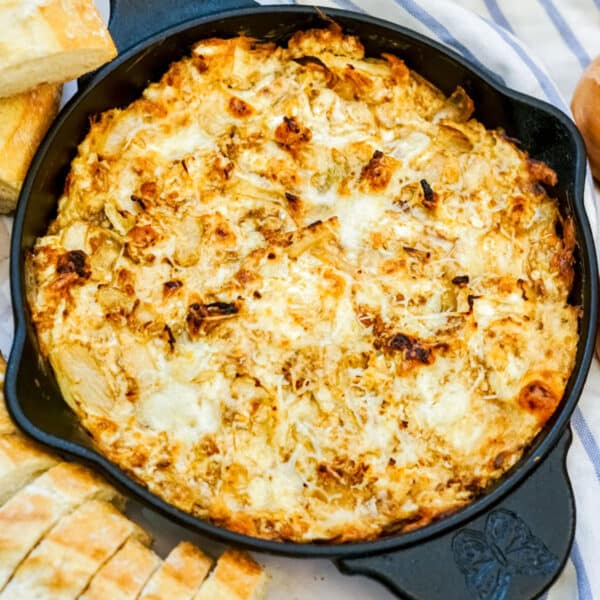

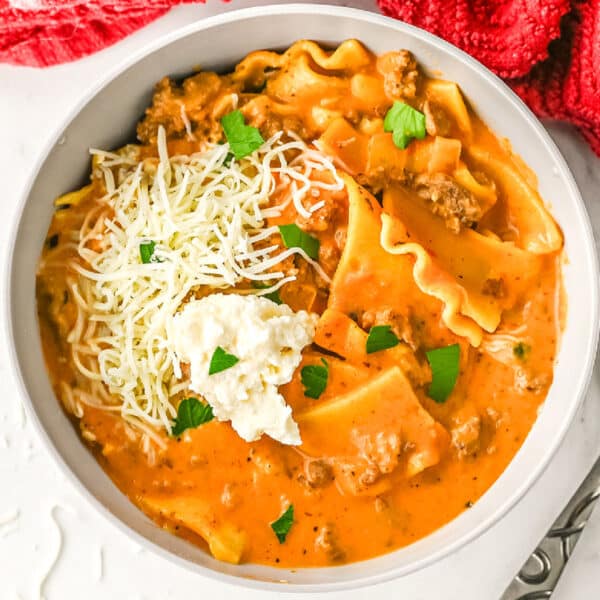


Frozen cubes of pesto are great for seasoning when heating pasta as a side dish.